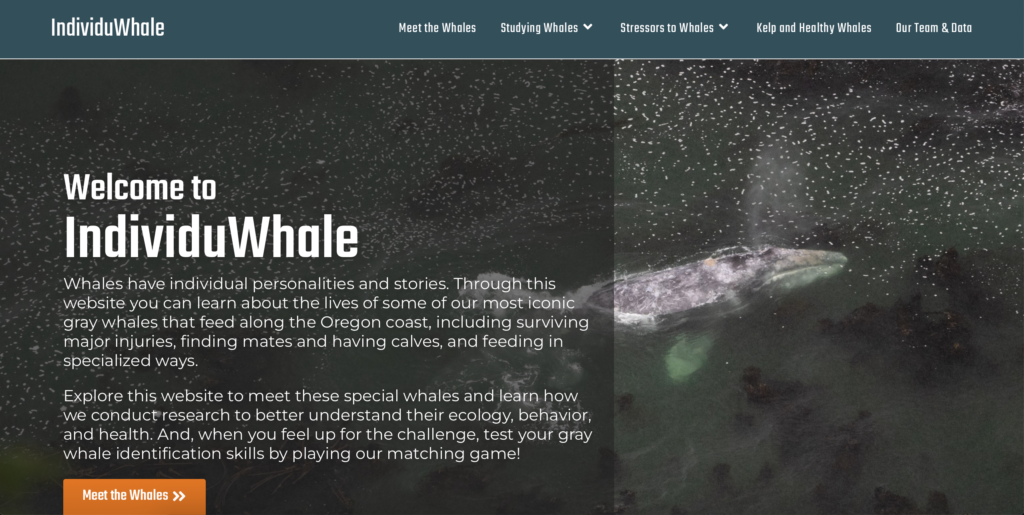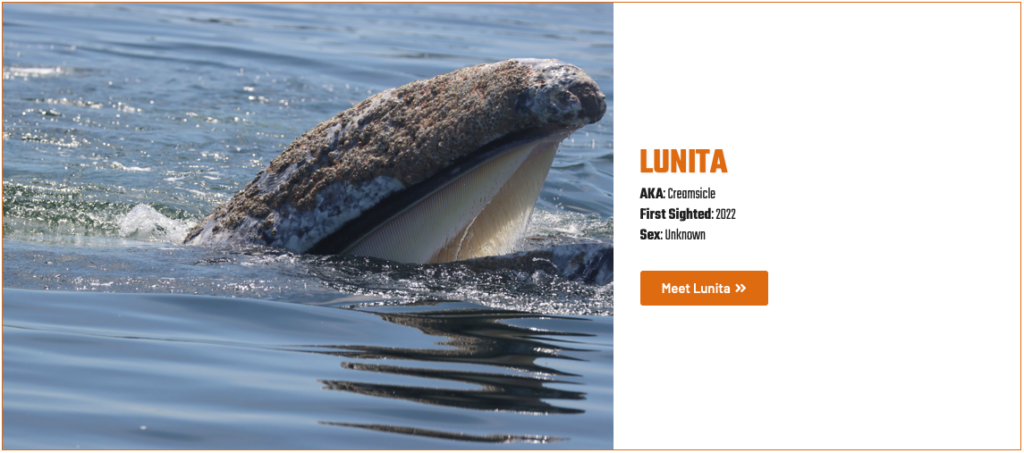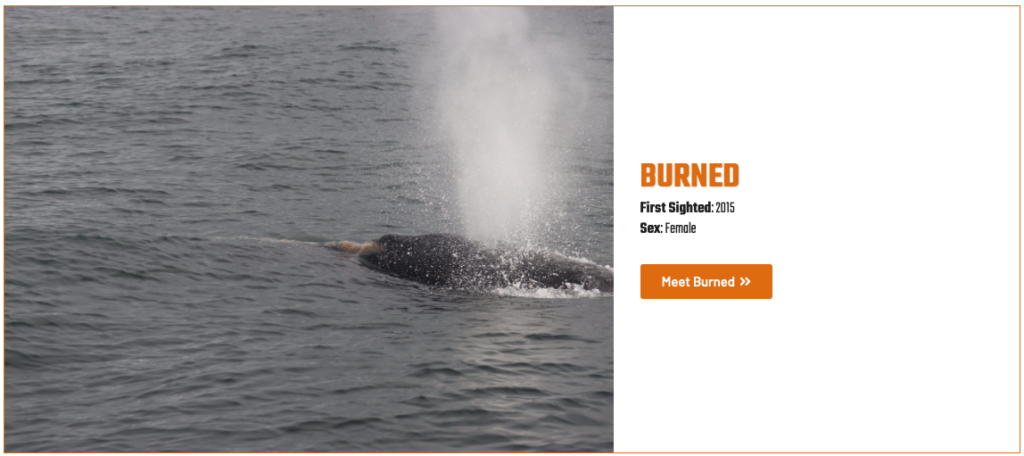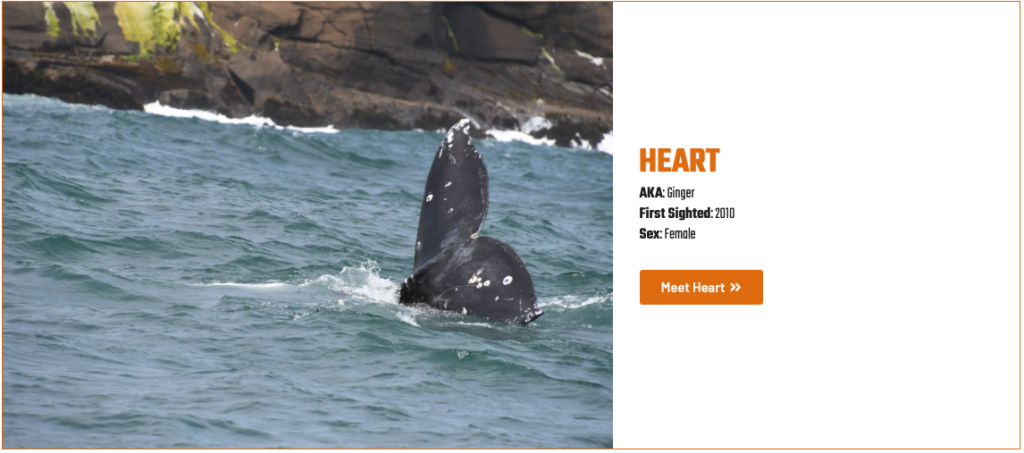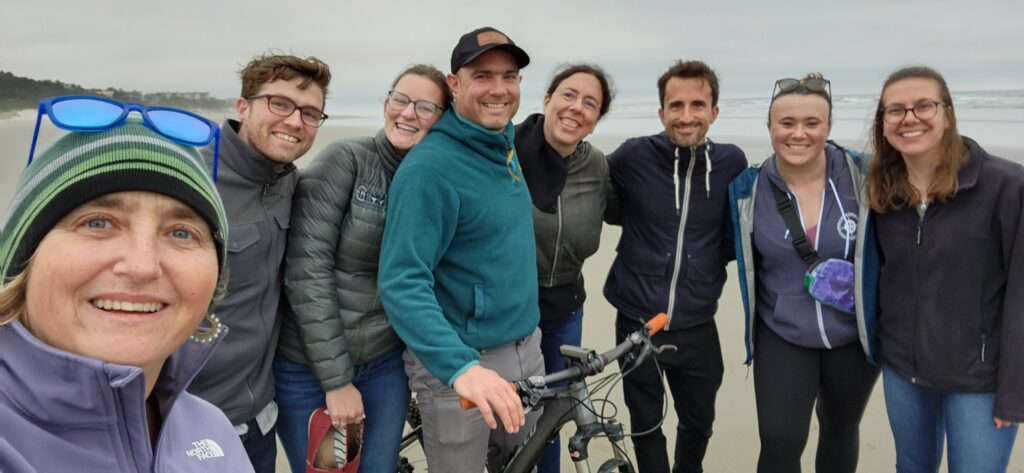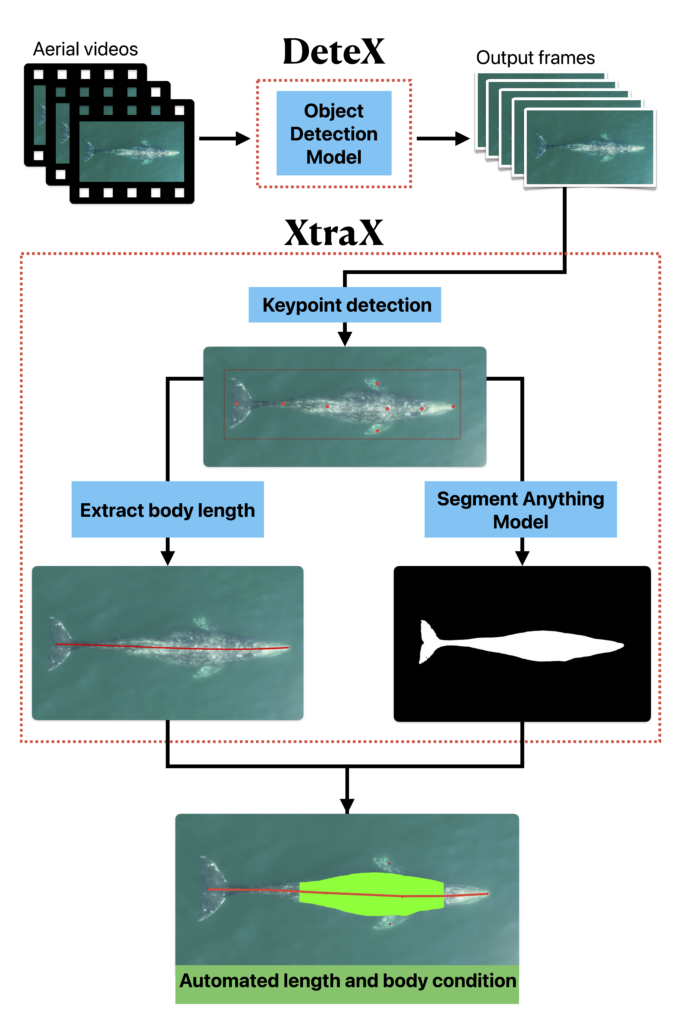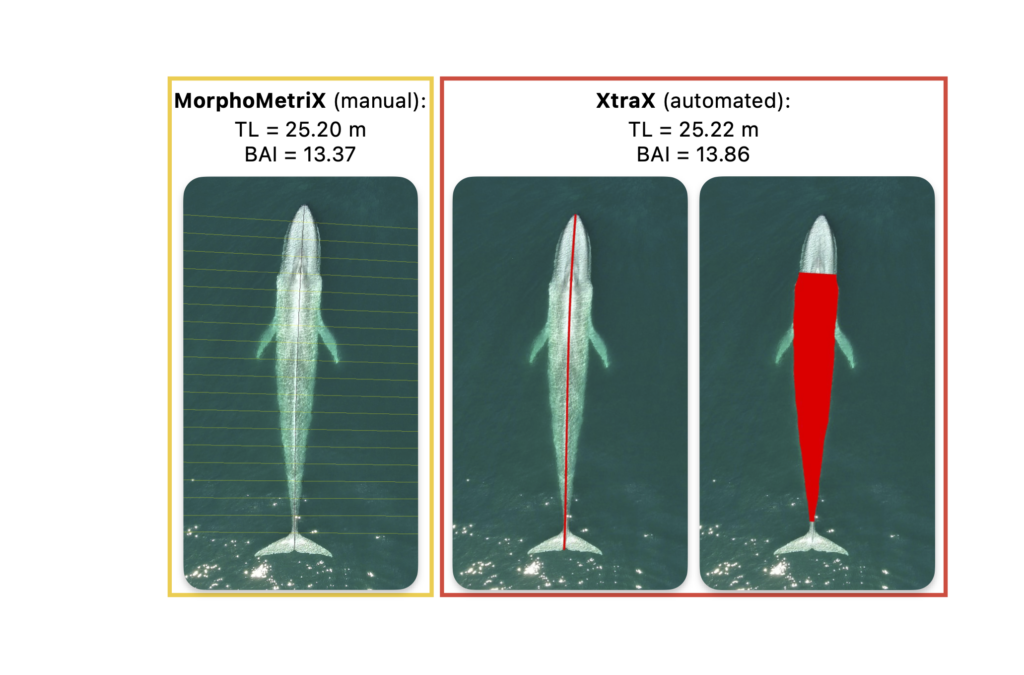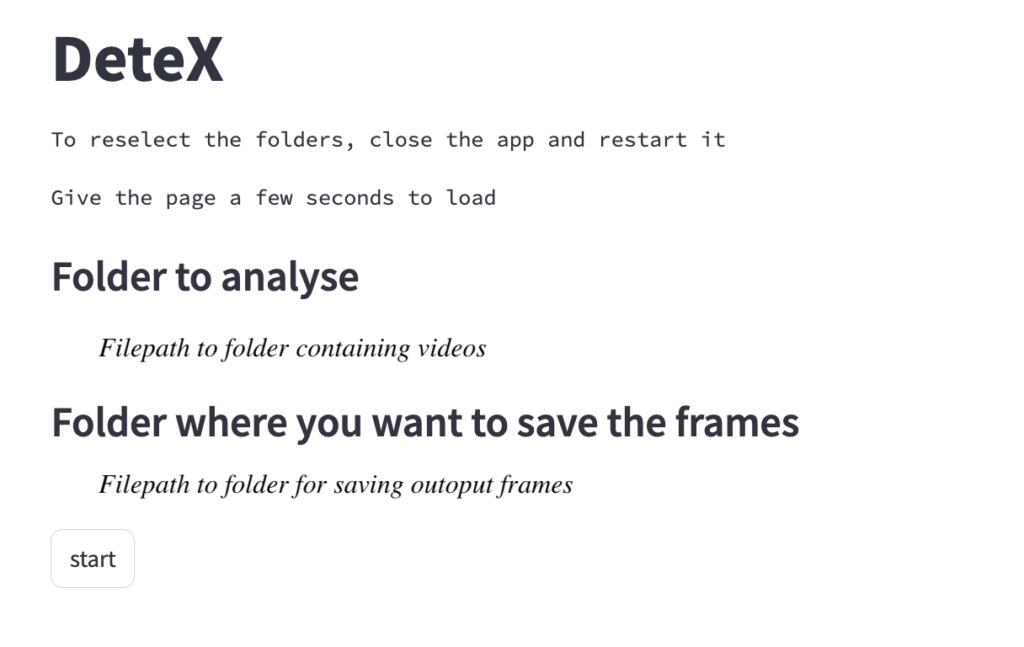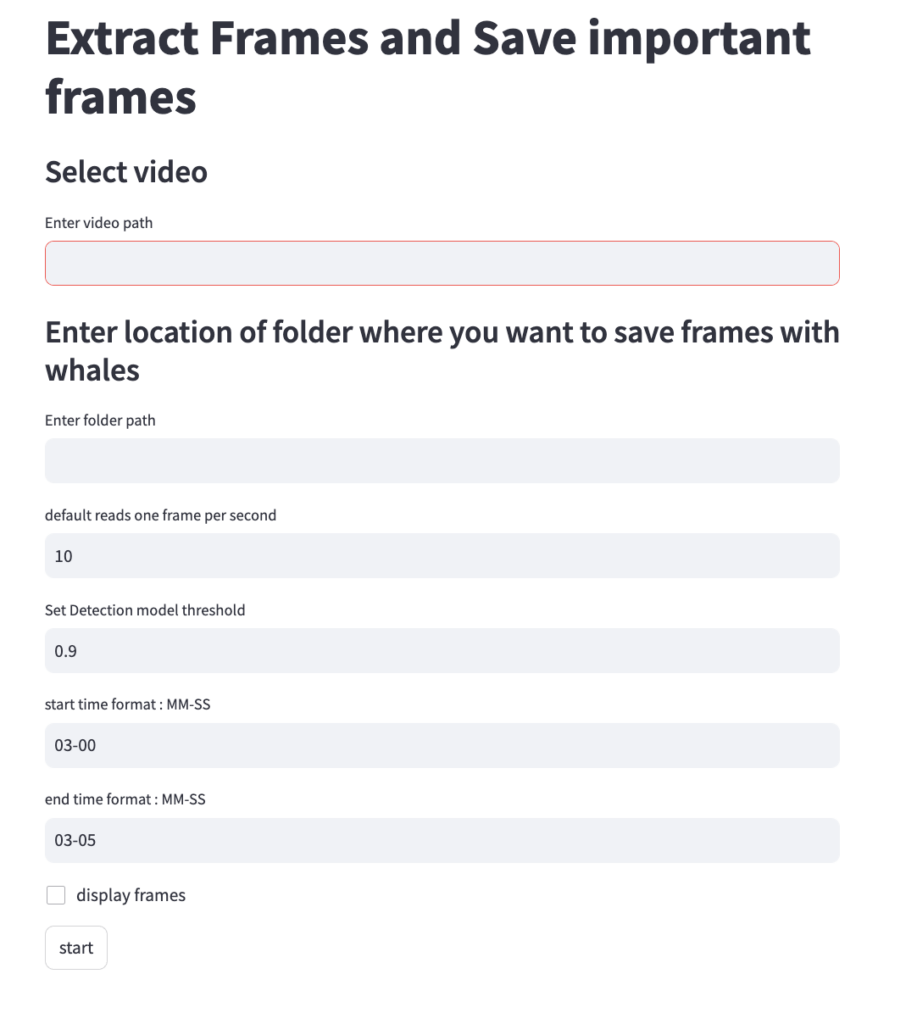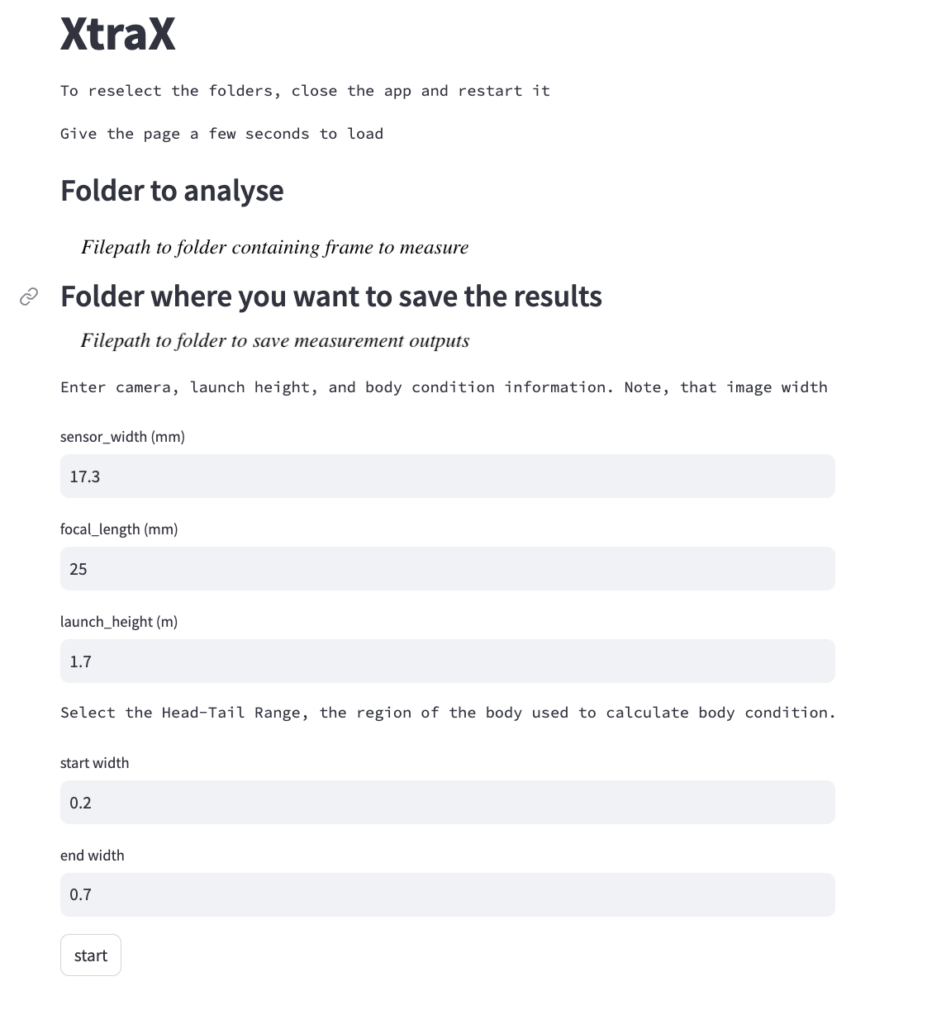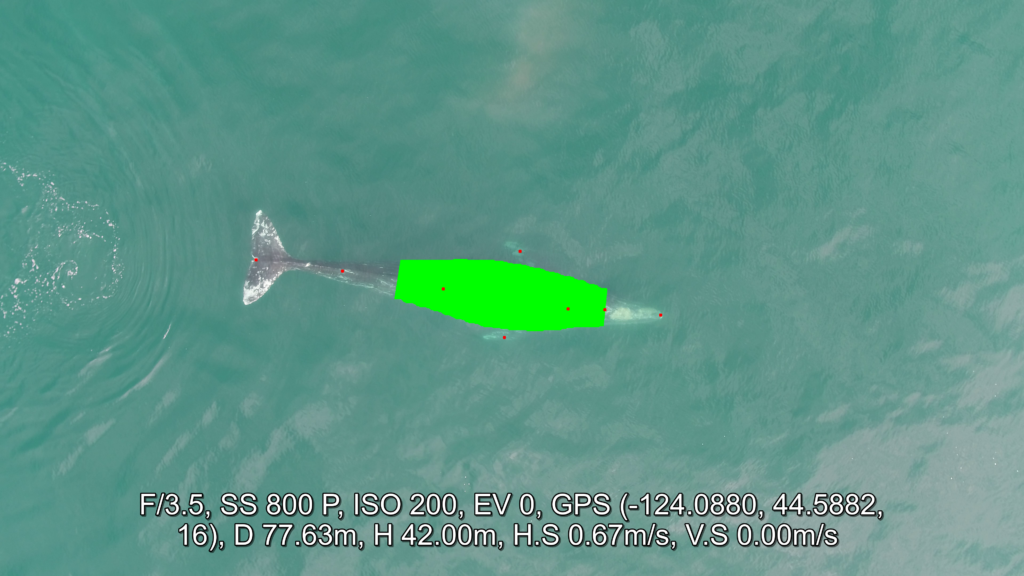Allison Dawn, Master’s alumni, OSU Department of Fisheries, Wildlife and Conservation Sciences, Geospatial Ecology of Marine Megafauna Lab
“Days are long and weeks are short” is the common quip used to describe our field work at the Port Orford Field Station, and given we have already breezed through our first week of the TOPAZ and JASPER projects I can confidently say this feeling has not changed. We have officially entered our 10th consecutive year of these two integrated projects, which provides experiential learning internships to high school and undergraduate students while conducting long-term monitoring of gray whale foraging ecology in this small study region.
To properly celebrate the decade of successful field seasons of TOPAZ/JASPER, the GEMM Lab organized a proper 10-year reunion party. Last Friday, 32 interns, previous team leaders (Florence Sullivan and Lisa Hildebrand), project PI Leigh Torres, and important project collaborators all gathered to share in a bit of nostalgia and laughter as we celebrated the project’s milestone. To get a preview of this “Decadal Celebration”, as well as our journey this summer, be sure to follow @gemm_lab on Instagram! Also keep an eye out for an upcoming blog post dedicated to recapping the celebration.
In addition to honoring the decade-long legacy, this year is also special as I am co-leading “Team Protein” with Celest Sorrentino, incoming GEMM lab Master’s student. Now with four South Coast summers under my belt, I am beyond excited to get to share what I’ve learned with someone equally as passionate about immersive marine science education and mentorship. While I am teaching Celest how to prepare for weather-dependent fieldwork, lead a team of 5, shop on a budget, organize the lab, and more, I am also learning so much from her. I am especially grateful for her bright energy and unwavering positivity, which are skills that can rarely be taught yet have such a powerfully positive influence on the success of a field season. After just a week together I feel there is no one better suited for me to pass on the “GoPro/RBR torch” to and I know she will lead the project successfully into its next chapter.
Figure 1: Allison and Celest, on a particularly windy day, fully packed with gear and groceries, ready and excited to head to the South Coast Outpost!
That said, we still have 5 weeks before the 10th year has officially culminated, and it is my honor and pleasure to introduce you to the team who will be paddling us through this incredible milestone! Before I talk about each individual, I’d like to explain the inspiration behind our team name this year.
Every Port Orford field team gets to choose their team name, and we quickly settled on ours – “Team Protein”! After we spent a few days together, the five of us found we have at least two things in common: we all love exercise and to fuel up on protein. Between quick 2-3 mile evening runs, competitive pushups after dinner, yoga – on top of our kayaking and gear-carrying- and so much baked chicken, we are undoubtedly getting stronger together.
In addition to this name describing the team well, we also have seen an increase in zooplankton abundance sampled during the first-week than in previous years. Because whale food seems to be prevalent this year, we all agree that this season’s whales will also be on “Team Protein”. We hope that means we will see strong, healthy PCFG whale visitors in the next several weeks!
Figure 2: Logo for “Team Protein”, created by NSF REU Sophia Kormann
So, who exactly are the brains and brawn behind Team Protein? First, we have team leader Allison (me!). I defended my master’s degree in June 2023 and loved the beauty and community of the South Coast so much I decided to stick around for one more adventure-filled year before moving on to begin my doctorate at Clemson University in South Carolina. There I will be implementing all the skills and lessons learned in the GEMM Lab into studying grassland bird habitat using remote sensing technologies. I am thrilled to get another year of leading this incredibly dynamic project, mentoring students, and obviously increasing my muscle mass before I move on from studying (gray) whales to (bobwhite) quails.
Figure 3: Allison stoked on great conditions for our first kayaking sampling training day
Next, we have our co-lead, Celest Sorrentino!
Figure 4: Celest, Allison, and Leigh grabbing a selfie before the awesome Decadal Party!
Name: Celest Sorrentino
School/year: Oregon State University, incoming master’s student
What interested you in this project/what are you most excited for?
As an older sister of four, teaching and mentoring them has always been something I’ve loved to do and intended to hone my skills in as I pursued higher education. When the opportunity arose during a conversation with Dr. Torres last summer to be able to develop these valuable skills during my masters, I couldn’t be more excited. Now having completed just my first week here in Port Orford, I can totally understand the enamor Allison has shared for this project. I am excited to continue to learn from her as not only a lead for this project, but also from her own mentorship style that is both naturally impactful and unique.
Our third team member is our NSF REU student Sophia Kormann. Stay tuned for her blog next week on the exciting project that she has been co-mentored by myself, Leigh and Clara.
Figure 5: Sophia enjoying the beautiful moonrise on the cliff site at the Decadal Party.
Name: Sophia Kormann
School/year: rising senior at St. Olaf College
What interested you in this project/what are you most excited for?
I was looking for something within biology research that would allow me to do a lot of analysis but wouldn’t just be sitting at a desk all day. And if you get the chance to whale watch everyday for the summer…you take it. I am the most excited to combine my interests in biology and statistics.
Next we have Eden Van Maren, who I met during a recruitment talk in Brookings. Eden immediately stood out as an enthusiastic and bright student.
Figure 5: Eden’s first zooplankton net sample had more amphipods than Allison had ever seen in the net!
Name: Eden Van Maren
School/year: I am homeschooled doing electives at Brookings-Harbor High School.
What interested you in this project/what are you most excited for?
I was interested in this opportunity because of the opportunity to do scientific field work while getting to kayak on the ocean. I’m excited to learn about how ocean conditions affect zooplankton and how that impacts whale foraging.
Last but not least, we have Oceana Powers-Schmitz. Oceana is a passionate bookworm and impressive history buff. In addition to taking on this fieldwork internship, she is also teaching herself Algebra 2 in order to test out of taking the class next year.
Figure 6: Oceana finds a red urchin at Nellie’s Cove!
Name: Oceana Powers-Schmitz
School/year: Brookings-Harbor High School
What interested you in this project/what are you most excited for?
Getting actual research/lab experience as well as using it to see what part of science I’m interested in, and to hopefully have a whale-filled summer.
Well, as a surprise to no one, we’re off to do some yoga. Tune into our Instagram takeover by following @gemm_lab on instagram for more real-time updates from “Team Protein”!
Did you enjoy this blog? Want to learn more about marine life, research, and conservation? Subscribe to our blog and get a weekly message when we post a new blog. Just add your name and email into the subscribe box below.







